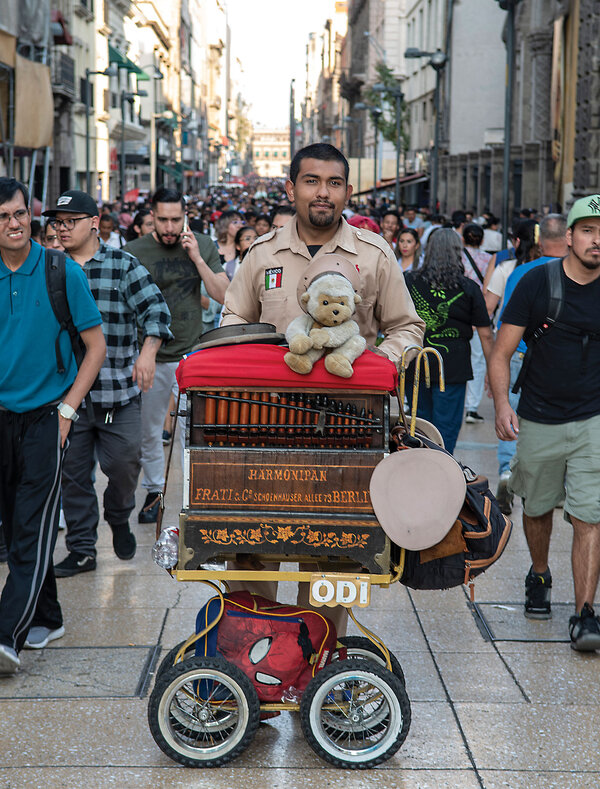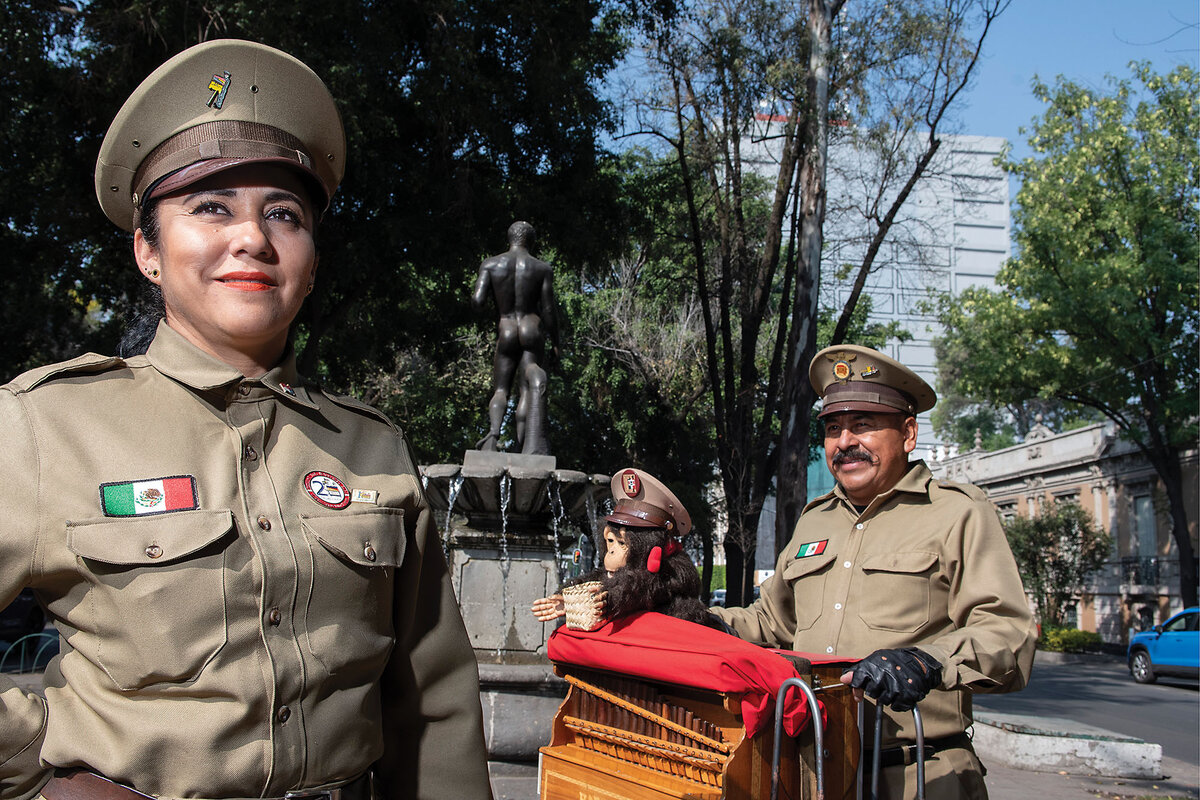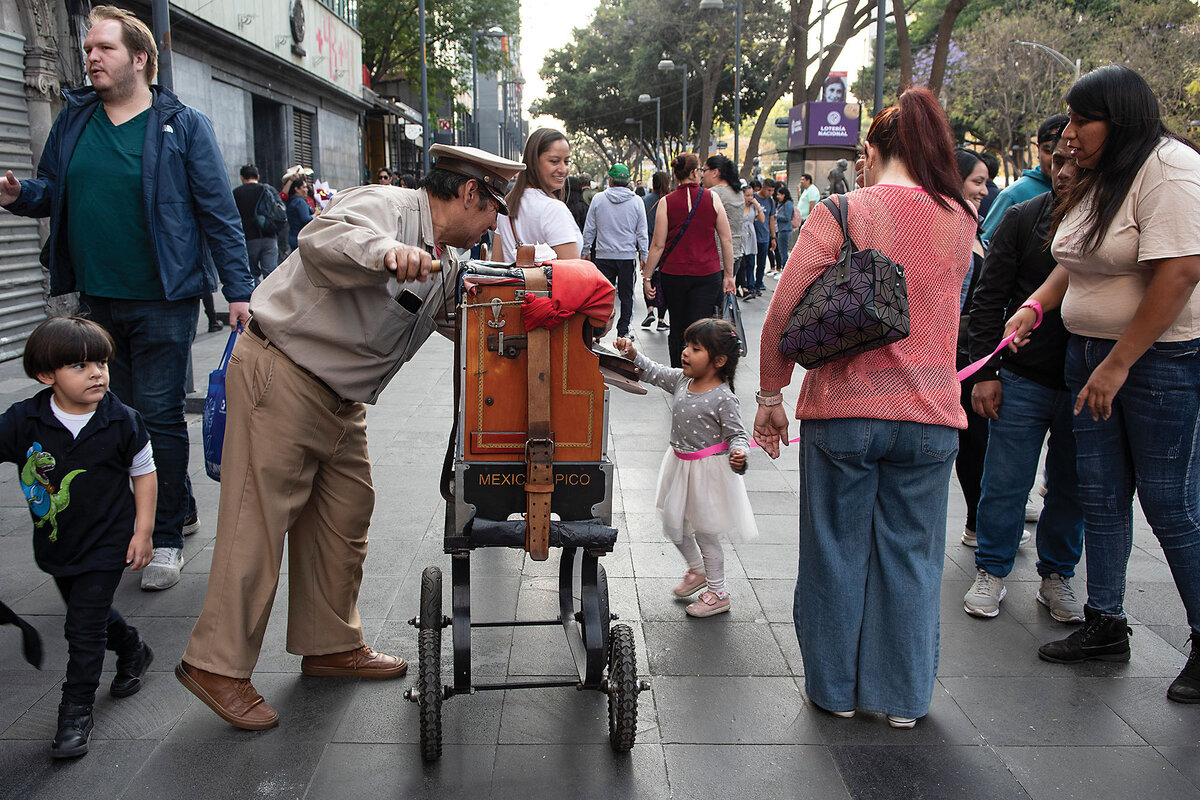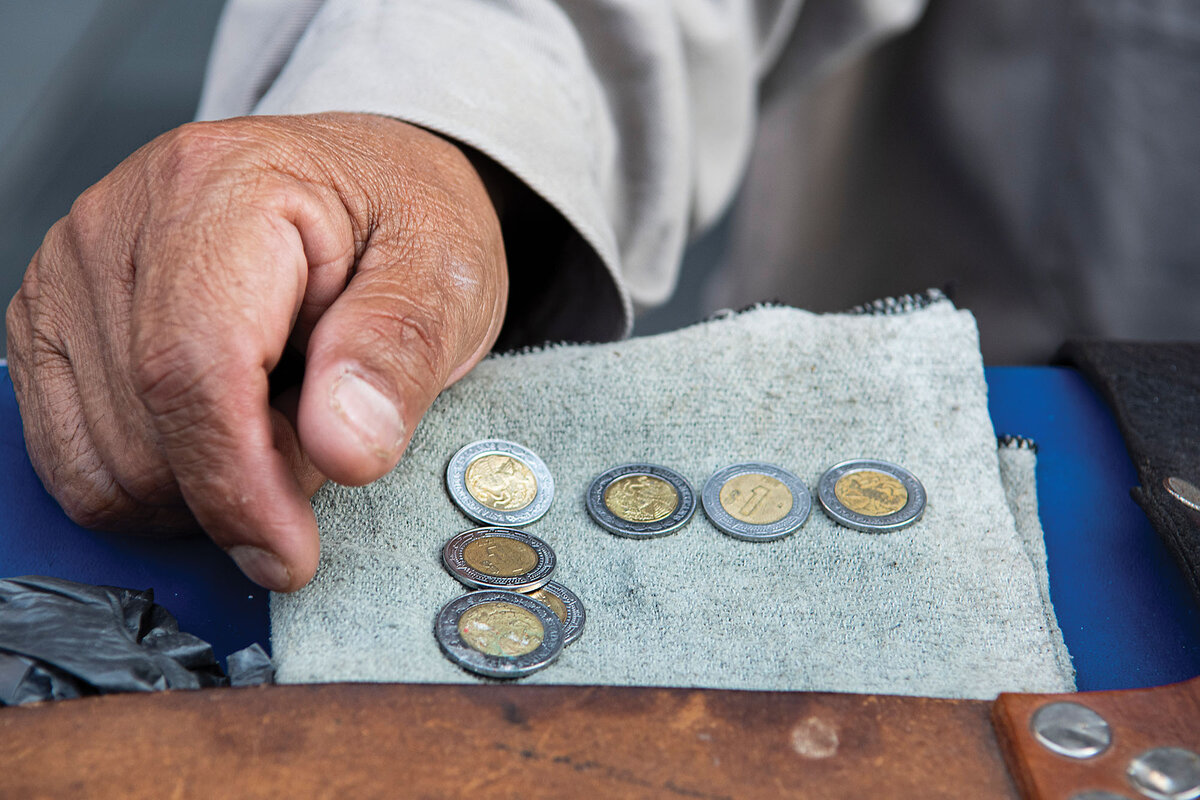Old-timey organ-grinders try to keep pace with modern Mexico City
Loading...
| Mexico City
Hunched over a weatherworn hand-crank organ in his repair shop, Roman Dichi explains why the work of Mexico’s organilleros has endured for a century and a half.
“This music evokes happiness, tradition, and childhood memories of going out to a plaza with Mom and Dad – or of falling in love,” says Mr. Dichi, president of the organ-grinders union in Mexico City.
He has played the instrument since the 1980s, when his in-laws introduced him to the family business.
Why We Wrote This
A story focused onTraditional organ-grinders are facing new realities. Can they continue coexisting on the streets of modern Mexico City?
“It’s a classic sound of the city,” he says.
Organ-grinders, especially ubiquitous in Mexico City’s historic center, date back to the presidential administration of Gen. Porfirio Díaz in the late 1800s. The dictator’s adoration of all things European inspired Mexico’s elite to import organs into their homes. Eventually, the instruments moved out of private parlors and onto the streets as public entertainment. They were used to draw customers to circuses, with the help of monkeys, and to keep soldiers in good spirits. Over time, the European songs inside the machines were replaced with revolutionary ballads and local classics, such as “Las Mañanitas,” the Mexican birthday song.
Despite these deep roots, today the tradition is at risk.
Not everyone is charmed by the tip-seeking musicians. A crank organ’s sound – akin to the pitchy puff of air from a slide whistle – can be loud. In the wrong hands, an organ can be positively off-key, an assault against the ears. Police harassment of organ-grinders is common, as are quarrels with annoyed residents and business owners.
The organs are also expensive, with many organilleros renting them from the small stock available locally. And upkeep gets costlier with each passing year. The heavy instruments can get damaged while being wheeled down crowded city streets or warped by weather and time.
Edgar Alberto Méndez Hernández has been slowly turning the crank on his organ in the capital’s historic center for some 15 years. He nets about 250 pesos (a little more than $15) on a good day after paying 250 pesos for his rental, he says.
“I feel plugged into the city,” says Mr. Méndez. “There’s something special about being a part of the action on the street that I would miss if I did anything else” for work.
After several hours working along a bustling sidewalk near the Bellas Artes theater, he pushes his black-and-brown antique wooden organ on its dolly and heads several blocks toward the Zócalo square. When he shows up at this even busier – and potentially more lucrative – spot, the two young men already playing organs there take their cue, as if in a dance, and move to a side street. These shifts are imperceptible to the public but tediously negotiated with the union’s help.
Organilleros’ work is hardly stable. They are part of the nearly 60% of the Mexican working population who are in the informal labor force. They “live off of tips,” notes Yuleina Carmona, the Mexico City coordinator for Women in Informal Employment: Globalizing and Organizing, an international nonprofit. Shoeshiners and strolling mariachi bands have fixed rates for their services, but organ-grinders churn out music whether they are paid or not.
“It’s a different relationship with the public,” Ms. Carmona says, adding “the city wouldn’t be the same without them.”
In March, Mr. Dichi’s union submitted a proposal to Mexico City’s Congress to have organilleros’ work recognized as a cultural heritage. It was the fourth attempt – and this time it was approved. The legal recognition is expected to translate to better protection on the street from police harassment and greater support for organ-grinders in their disputes with residents and businesses. Ms. Carmona notes it will also give organ-grinders “a seat at the table” – a say in how Mexico City uses funds for cultural activities in the center.
“I like the street, being in the middle of everything,” says César Castillo, whose wife suggested he consider this line of work two years ago. He left his job in private security to crank an organ, which he rents, with a cuddly teddy bear perched on top. A colleague weaves through the crowd of pedestrians with his hat outstretched for tips.
“I get to interact with people,” Mr. Castillo explains. “A job well done can make them smile.”











